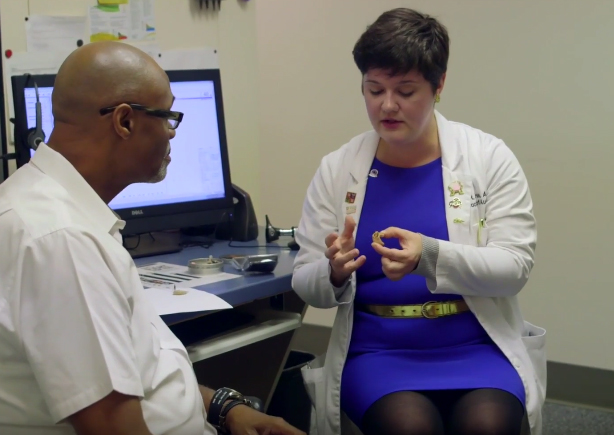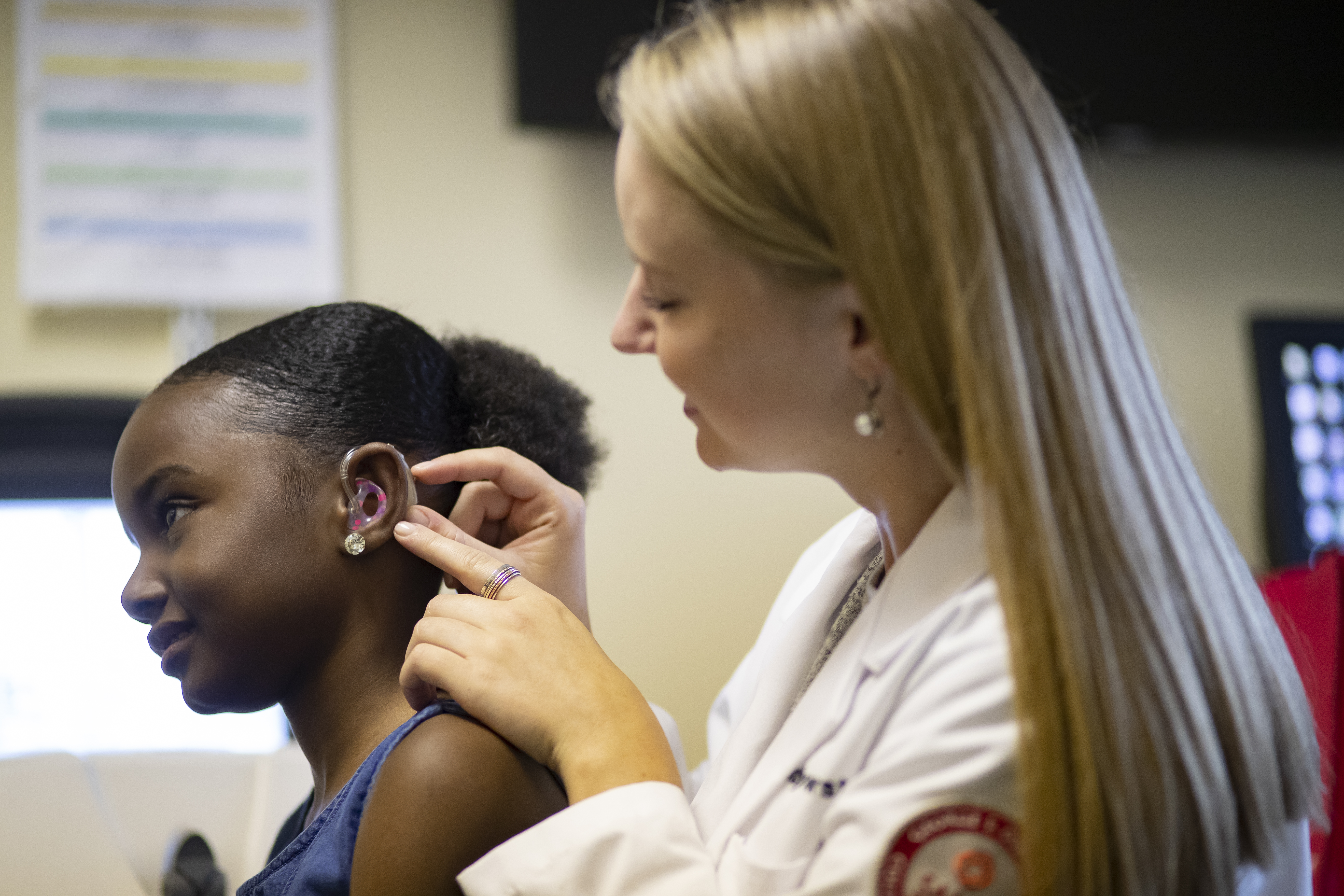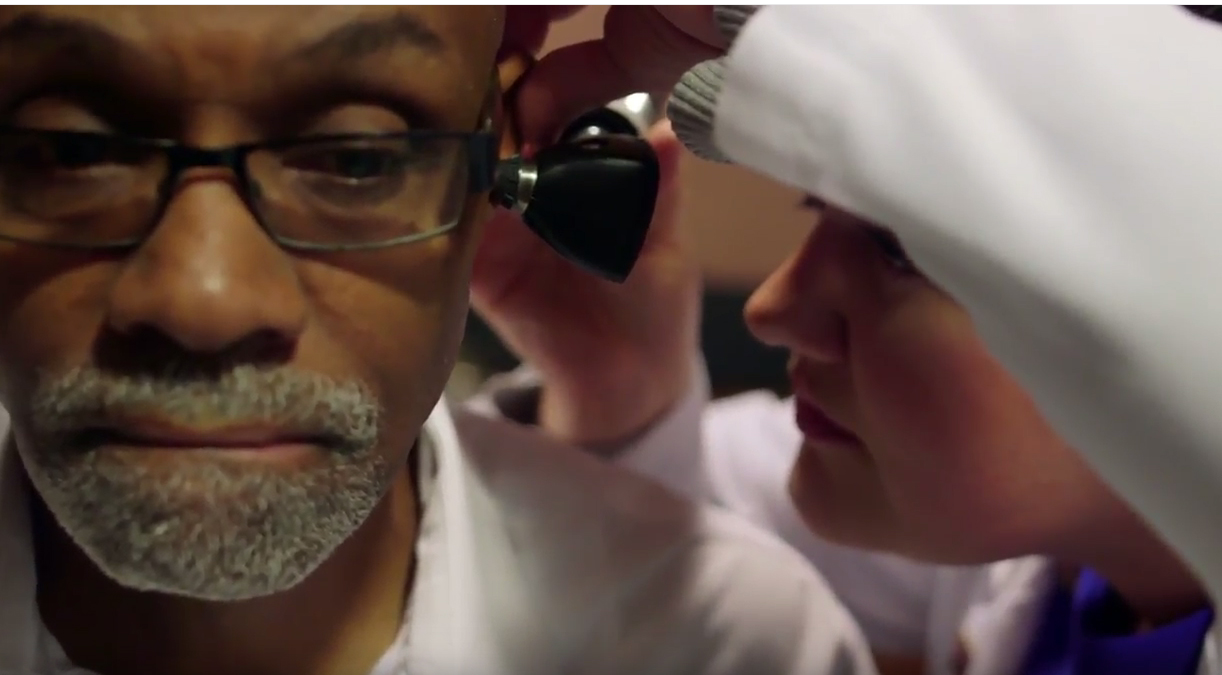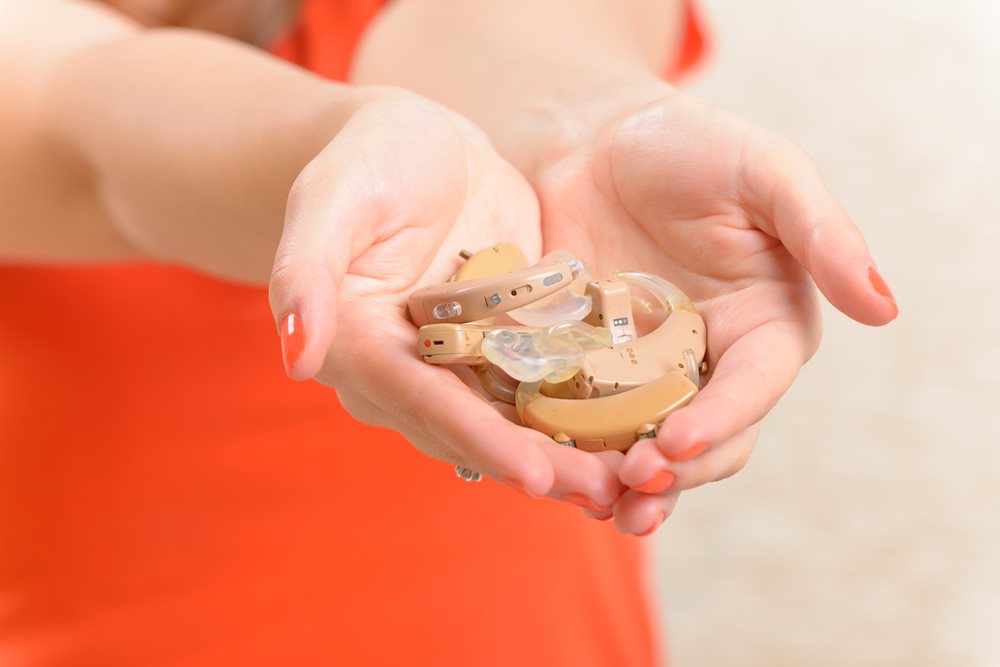
Dr. Rebecca Blaha, lead audiologist at the Pennsylvania Ear Institute (PEI) and assistant professor at the Salus University Osborne College of Audiology (OCA), explores the question of why there's no world's best hearing aid and draws the parallels to the complex nature of defining the "strongest" cup of coffee in an intriguing episode inspired by coffee expert James Hoffman.
To take a page from James Hoffman's video, his claim was how would we define strong? Are you talking about how much caffeine is in that cup of coffee? How much coffee is extracted during the water process? How dark the roast is, or how bitter the taste is? There's a number of different factors where someone drinking the same cup of coffee might say, "That's a strong cup of coffee." Someone else would say, "No, it is not." The same thing applies to hearing aids. How would we define what truly means to be the best? Are we talking about sound quality? Because sound quality perception is very personal. The way you perceive the performance of the hearing aid relates to how well your auditory system can handle the information that's being presented. Then could we say that the best performance is how well it manages background noise?
Background noise can only be managed in very controlled environments. In a typical real-world listening situation, hearing aids do not perform the way they would in a laboratory setting. When we look at noise reduction ratings and things, they were performed in highly controlled, experimentally designed situations that do not truly replicate how you would interact with a normal listening environment in your typical activities. We also want to think about what makes them best. Would that mean that they have the fewest number of repairs and that they're easy to maintain? Generally, all devices have the same parts and so therefore would require the same maintenance. If you're applying a good practice of cleaning and care, they should generally all last about the same amount without many needs for repair. We also have to consider what makes it the best. Is it ease of use?
 Is there something that one manufacturer does that makes it more simplified, more automatic, easier to maintain, easier to put on? A lot of factors would determine how easy is that to use based on your dexterity, how well can you hold onto it and that's personal to you as the user. Let's dive into some of these topics with a little bit more detail. Let's start with sound quality. Sound quality is hard to define because the quality that you perceive is related to the function of your auditory system. The most typical reason for hearing loss or hearing changes would be a loss of sensory receptors. The inner ear has hair cells, and these hair cells are tuned for specific frequencies and specific volumes. And over time through exposure to loud sounds, through a work environment, military service, recreational activities, they will slowly be damaged and they do not recover.
Is there something that one manufacturer does that makes it more simplified, more automatic, easier to maintain, easier to put on? A lot of factors would determine how easy is that to use based on your dexterity, how well can you hold onto it and that's personal to you as the user. Let's dive into some of these topics with a little bit more detail. Let's start with sound quality. Sound quality is hard to define because the quality that you perceive is related to the function of your auditory system. The most typical reason for hearing loss or hearing changes would be a loss of sensory receptors. The inner ear has hair cells, and these hair cells are tuned for specific frequencies and specific volumes. And over time through exposure to loud sounds, through a work environment, military service, recreational activities, they will slowly be damaged and they do not recover.
We are unable to regenerate these sensory receptors, so when they are gone, we have nothing to accept the sound that is continually being sent through the auditory system. With that in mind, you can have a device, a hearing aid that can amplify numerous frequencies, maybe even out to 10,000 hertz, but if your ear does not physically have a receptor, then you won't perceive the benefits of that full bandwidth and full sound because you don't have the ability to accept it and to use that information. We can't say universally that the sound quality for one brand is better than the sound quality for another. It will be truly your perception of how well that device assists your auditory system. As an example, you've all experienced the moment when you've walked into an electronic store to purchase a television. And you're looking at that wall of screens and you're like, "Oh, this one looks very clear to me, but this one looks a little fuzzy,” and different aspects of it but that's your visual system and how well it can accept.
 Also, how well is that screen setting adjusted? Because a lot of electronics have significant numbers of settings that can be changed to improve how you perceive that image. The same applies to a hearing aid. The hearing aid is prescribed to assist you specific to the needs of your auditory system. We are looking at the frequencies that would be most important to understand and communicate, and then we're looking at areas where you have better reception for sound and prescribing the amplification in those regions. And that way the assistance that is provided is going to allow you the best level of improvement.
Also, how well is that screen setting adjusted? Because a lot of electronics have significant numbers of settings that can be changed to improve how you perceive that image. The same applies to a hearing aid. The hearing aid is prescribed to assist you specific to the needs of your auditory system. We are looking at the frequencies that would be most important to understand and communicate, and then we're looking at areas where you have better reception for sound and prescribing the amplification in those regions. And that way the assistance that is provided is going to allow you the best level of improvement.
All of this is very relative to the function of your auditory system. You could try every manufacturer on the market and all of their premium products and you personally may not perceive a difference, but you may have someone who says, "Oh, I really love this product because it sounds very smooth, very comfortable, very natural." And that's specific to them and the abilities that they retain in their auditory system.
Another aspect of how hearing aids function would be their ability to comfort you in background noise. When people are new to amplification, one of their biggest complaints is that they listen to too much background noise. It seems excessive and competes for their attention, and their goal was to improve communication. They wanted voices to sound clearer and be more distinctive and easier to understand. But the background noise is also amplified because all the same frequencies, I think of it like a bowl of soup. Once we've thrown all the ingredients together, it's very difficult to pull things away. If I want you to be able to hear the sound “S” to have that clarity when someone is speaking, the distinctiveness of their voice, then I have to give you a significant amount of amplification in order to hear that sound. But that would be the same frequency as if I was trying to open a plastic bag.
If that crinkling sound in the background would seem excessively loud or the water running in your sink when you're washing your hands, it's all the same frequencies. If I'm going to improve communication for a conversation, you're going to also experience environmental sounds at a higher level. Manufacturers know that this is irritating and they're constantly improving the filtering abilities of their devices, but they can never eliminate a sound just like the bowl of soup. If I've got all the ingredients together, it's very hard for me to remove the salt or these spices once they're all blended together. The same thing would happen when the microphone experiences sound, it's very hard to remove something. We can comfort the situation by slowly filtering different components away, but we can only do that to a level where the speech will not be distorted or removed.
The level of comfort that is gained, it's personal to you. The hearing aid could be prescribing and adjusting to its maximum capability, but you would still rate that as an uncomfortable listening experience. We all have an acceptable level of noise that we are willing to tolerate. And studies have been conducted in this area by Anna Nabelek and colleagues. I believe this was in the mid-nineties, and they called it the Acceptable Noise Level test. It showed that we have a certain tolerance, and that's personality wise that you will accept only so much background noise before you begin to feel irritated and would basically want to leave the listening situation. And this is measurable, and the more noise that you are willing to accept allows you to participate longer and actually perform better with hearing aids. If you have a low tolerance for background noise, then you are more likely to be dissatisfied with your hearing aid experience.
 With background noise, the hearing aid tries to analyze what comes into the microphone and it says, “Am I listening to a voice or am I listening to a machine?” Like the engine in your car. “Is it wind? Is it music? Is it just people chattering?” Like you might be having coffee at a coffee shop reading a newspaper. There's nobody talking to you, but it can sense that there's other sounds in the environment.
With background noise, the hearing aid tries to analyze what comes into the microphone and it says, “Am I listening to a voice or am I listening to a machine?” Like the engine in your car. “Is it wind? Is it music? Is it just people chattering?” Like you might be having coffee at a coffee shop reading a newspaper. There's nobody talking to you, but it can sense that there's other sounds in the environment.
In that instance, the hearing aid goes for a comfort strategy and the comfort strategy just turns down the volume, but it's only going to be able to go so low because it never turns itself off. It's never going to eliminate its own capability, it'll just lower the volume so that you can maintain some level of awareness and connection. As it does that, it's up to you and your auditory tolerance for background noise to decide, was that adjustment effective or were you still irritated by that level of background noise? Because that's also a personal factor that would affect whether you considered that device to perform well or poorly. And so that would say, is that a good hearing aid? Would you recommend it to someone else? Your personal experience, good or bad, it's still your personal experience of the function of that device. Additionally, we have the concern of how much the device requires repairs. There is no device that requires no maintenance. That's just not possible.
If we think about how these devices are worn, they have to sit in a generally humid environment of the ear. Every device has to have something that directs sound into the ear canal. And the ear canal produces ear wax as a protective mechanism for the skin to maintain pH, keep insects from entering the ear canal. Ear wax is natural and normal to be produced, but the hearing aid would be sitting in the body heat, the humidity that's generated from your normal activities and movement as well as the ear wax of your ear canal.
Every time it comes out of your ear, you have to give it an inspection and say, is there something that has clogged up this hearing aid? If something is clogging up the device, the device will not perform correctly. It's going to sound like it doesn't work because the sound is prevented from coming out of the hearing aid by an obstruction. The debris would have to be removed, and that's regardless of whether that device fits over your ear or is fully encased and fits inside your ear.
 Both of them have their speakers affected by the environment that they sit in. If the device fits over the ear, we also have to contend with perspiration from your hair because that would be going into the microphones and components. Newer products that are rechargeable do have better resistance to the effects of moisture because they are more sealed.
Both of them have their speakers affected by the environment that they sit in. If the device fits over the ear, we also have to contend with perspiration from your hair because that would be going into the microphones and components. Newer products that are rechargeable do have better resistance to the effects of moisture because they are more sealed.
They have fewer openings that would allow materials to get into the electronics, and so they are more resistant, but they are not effectively completely a water barrier. There are some on the market that are touted as waterproof, but again, they do have some limitations. They can't be submerged for an extended period of time or they can't be below a specific depth because eventually the seals will compromise and the moisture will come in.
When devices are used, a lot of the factors of how much maintenance is, how good are you about setting up a habit of looking at your devices and inspecting them. Every time you get a new device, you are provided with cleaning tools and a care kit and your hearing health provider should review how they are to be used. If you are applying those principles on a daily basis, the device should function indefinitely.
It's really one of those things. Are you diligent about your care? Because that would reduce the amount of repairs. An old statistic, I'm not sure if it still holds true with our current newer products, you used to say that hearing aids would need at least one repair a year, and that's because of their small size. They're more easily influenced by smaller amounts of moisture and humidity, and therefore sending them in at least once a year would be considered normal wear and tear. Because the newer devices have better seals and are a little bit more moisture resistant, we may not see that they require as much of that general maintenance, but again, you are still required to inspect and care for that device because it does require basic care. And to our final point about ease of use, again, ease of use is a personal feeling about how simple the device is for you to put on, manipulate its program features.
Maybe it has a button that's on the back of the device. Is that something that you can feel due to dexterity? Maybe you have numbness, arthritis, [or] limited function. Also, we have to consider, is it something that seems intuitive to you? Can you manipulate it without assistance? Would it require someone else to put it on for you? Do you have a smartphone?
 The majority of hearing aids today can use an app through a Bluetooth connection to remotely control settings on the hearing aid. If you are not using an app or don't have a smartphone, do you find that it's convenient to adjust? Some people may require a basic remote control because feeling the buttons, it's not easy for them to do. So trying to change the volume where the programs can be very difficult and we don't want you to be frustrated. If the device seems like it's not going to meet your needs in the sense that it's only going to work if you can put it on and manipulate the settings, if that's not happening, then that device is really not useful to you.
The majority of hearing aids today can use an app through a Bluetooth connection to remotely control settings on the hearing aid. If you are not using an app or don't have a smartphone, do you find that it's convenient to adjust? Some people may require a basic remote control because feeling the buttons, it's not easy for them to do. So trying to change the volume where the programs can be very difficult and we don't want you to be frustrated. If the device seems like it's not going to meet your needs in the sense that it's only going to work if you can put it on and manipulate the settings, if that's not happening, then that device is really not useful to you.
The takeaway today is that there are multiple factors that are often very personal to the user of the device that would determine whether this is the best device for that person. When you purchase a device, the state dispensing laws for hearing instruments offer a trial period. After purchase, you have a certain number of weeks or months to return the product. You're giving it a good test drive to determine if this is the best option for you. Generally, during that trial period, you'll meet with your provider several times to help get feedback and troubleshoot any difficulties that you might be experiencing so that we can optimize the benefit that it provides.
Ultimately, we want you to be successful and for the majority of the time, the first device that is recommended is usually suitable for the majority of the users, but certainly there is room for exchange. If it would be determined that a different device would offer you better benefit, then you have the option to exchange it. But certainly, if you feel that it was unable to be effectively adjusted or manipulated, you would have the option to return that product and step away from the process for a while until you feel that you're ready to revisit your options.
The Pennsylvania Ear Institute offers a variety of services including comprehensive hearing evaluations, hearing aid fitting and repair. For more information on PEI’s hearing aid services, call 215.780.3180.